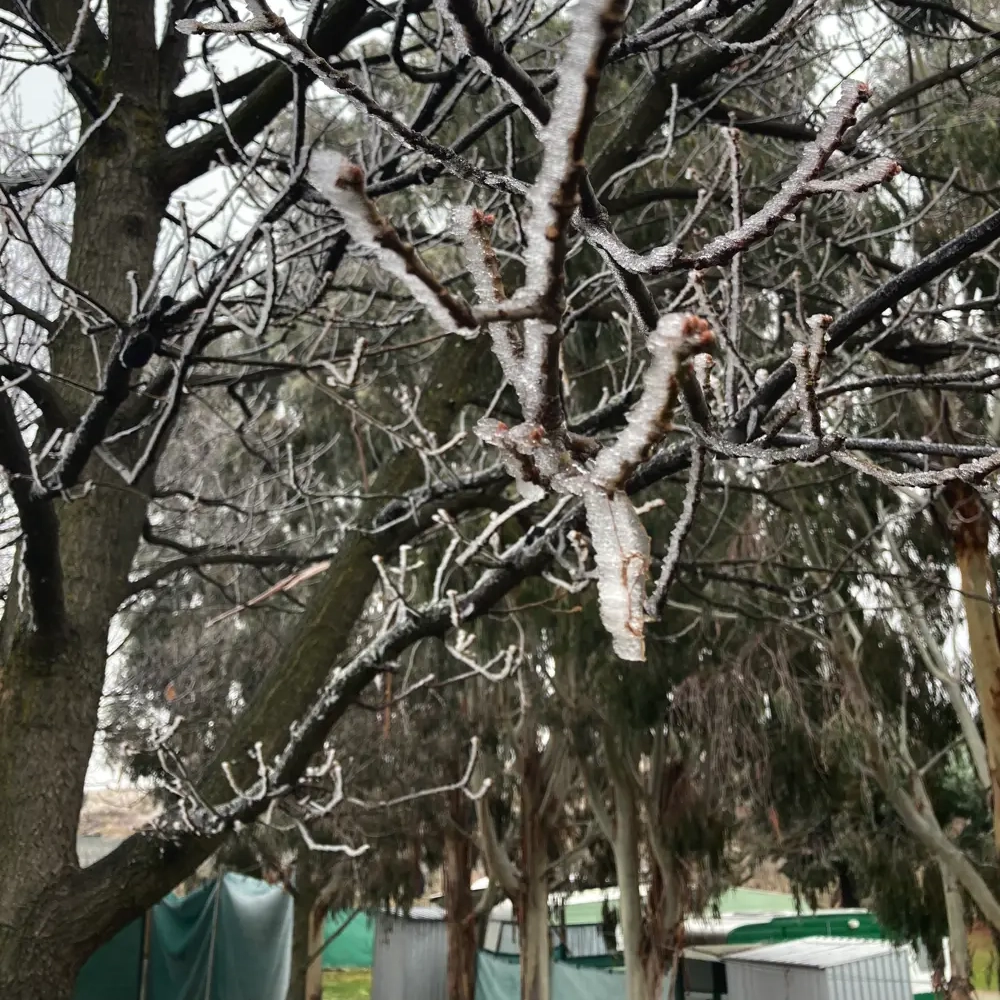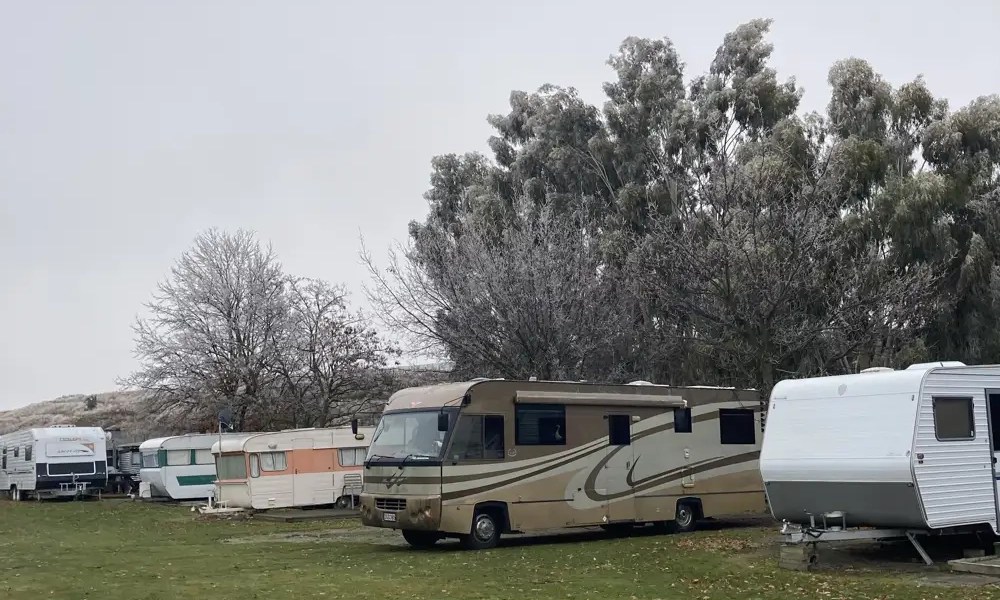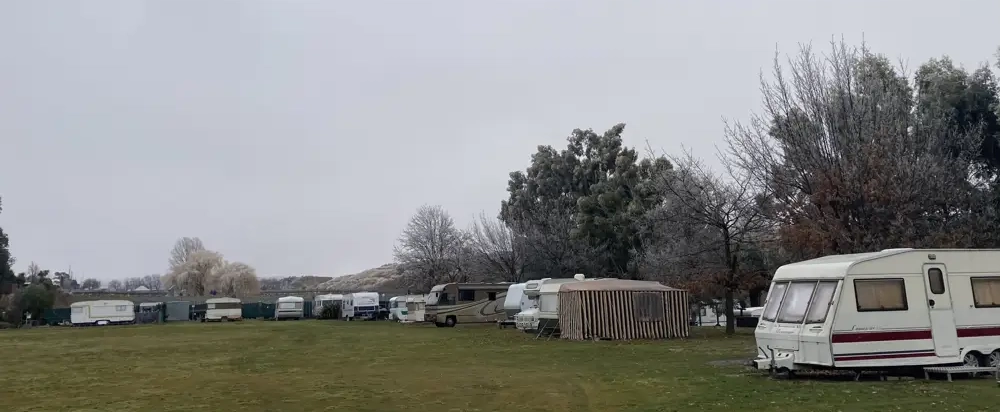Click on image for full view and caption
A bit of a learning curve
It was freezing
Miriam Richardson
This winter was my first in the Otago cold— a bit of a learning curve.
I looked enviously at people blithely heading to a snowy Mt Cook, or up to Omarama to experience the hoar frost (“is it still there?”) but I was too timid about the cold to venture.
I knew that my water pipes were not insulated. I knew that frozen water pipes can split. I knew how to stop them splitting. That was pretty much all I knew. Here is what I learned.
Fill the kettle so you have water for the morning when pipes are still frozen.
Turn off the water pump, open a tap. This releases the pressure in the pipe and gives space for expansion as it freezes.
Pipes don’t always defrost before the afternoon’s re-freeze begins. (Eeek!).
Hoar frost can last for many days. Being plugged in to power fixes the lack of solar problem, but doesn’t fix the frozen pipes problem.
You need a water container, with enough volume to last for several days of frozen pipes.
Campground water pipes freeze too but the camp-ground kitchen will probably have running water.
There are microclimates. The Bannockburn Campground where I stayed is in a very cold patch (pictured), while 8km away, Cromwell had clear skies. Moving gave me the chance to buy the missing water container (and decant the water from a bucket, wedged carefully and hopefully in my door-well), but I didn’t really need it once I had removed myself from the hoar-frosted valley.
Thankfully the freeze was inconvenient rather than disastrous for me, and now I am no longer afraid to head into the colder places. I would (will!) get my water pipes lagged, and I quite fancy having a remote temperature gauge underneath, so I know just how cold it is under there for my water pipes. ◼️
Images ©2024 Miriam Richardson

9 Spring 2024
, p
19












